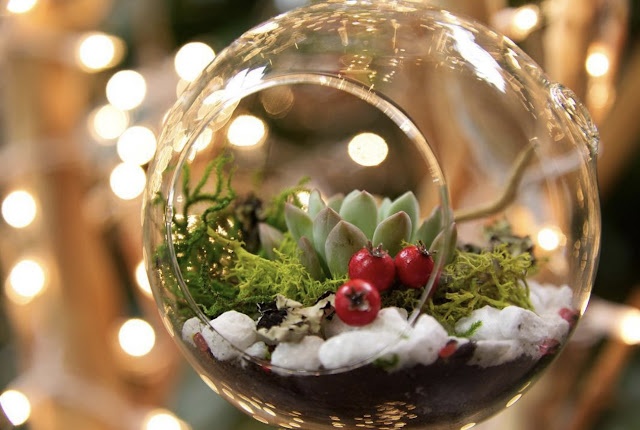
Exotic Plants offers mini-terrarium workshop

|
| Make a mini-terrarium in an Exotic Plants workshop Dec. 18. (Photo courtesy Exotic Plants) |
Here’s a gift that will grow on you – or the gardener on your list. Reservations are now open for a mini-terrarium workshop at Exotic Plants, Sacramento’s go-to indoor gardening store.
Set for 1 p.m. Saturday, Dec. 18, this hands-on, in-person workshop lets you create a hang-able mini-terrarium that doubles as holiday decoration. This plant-filled globe also feels at home in a window year round.
Sign up now; space is limited. Two sizes of mini-terrariums are available with the workshop priced accordingly: Medium ($35) and large ($45). Fee includes instruction, mini-terrarium, materials and plants.
Exotic Plants is located at 1525 Fulton Ave., Sacramento.
Register at: https://www.eventbrite.com/e/live-ornament-workshop-tickets-217231684817
Questions? Visit www.exoticplantsltd.com , call 916-922-4769 or email exoticplantsltd@gmail.net .
Comments
0 comments have been posted.Sacramento Digs Gardening to your inbox.
Food in My Back Yard Series
April 1: Don't be fooled by these garden myths
March 25: Fertilizer tips: How to 'feed' your vegetables for healthy growth
March 18: Time to give vegetable seedlings some more space
March 11: Ways to win the fight against weeds
March 4: Potatoes from the garden
Feb. 25: Plant a fruit tree now -- for later
Feb. 18: How to squeeze more food into less space
Feb. 11: When to plant? Consider staggering your transplants
Feb. 4: Starting in seed starting
Sites We Like
Garden Checklist for week of March 30
Your garden doesn’t mind April showers. Get busy now to enjoy those future flowers.
* Get ready to swing into action in the vegetable garden. As nights warm up over 50 degrees, start setting out tomato, pepper and eggplant transplants.
* From seed, plant beans, beets, cantaloupes, carrots, corn, cucumbers, melons, pumpkins, radishes and squash. (Soak beet seeds overnight in water for better germination,)
* Plant onion sets.
* In the flower garden, plant seeds for asters, cosmos, celosia, marigolds, salvia, sunflowers and zinnias.
* Transplant petunias, zinnias, geraniums and other summer bloomers.
* Plant perennials and dahlia tubers for summer bloom.
* Transplant lettuce and cabbage seedlings.
* April is the last chance to plant citrus trees such as dwarf orange, lemon and kumquat. These trees also look good in landscaping and provide fresh fruit in winter.
* Smell orange blossoms? Feed citrus trees with a low dose of balanced fertilizer (such as 10-10-10) during bloom to help set fruit. Keep an eye out for ants.
* Apply slow-release fertilizer to the lawn.